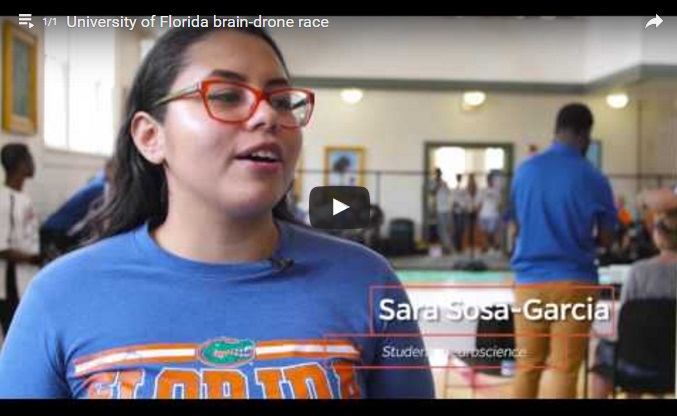Fitz Tepper
Drone races are nothing new. But while they started as an ad-hoc activity within the drone community, the sport has now taken on a life of its own with highly elaborate events and a partnership with ESPN.
Similarly, brain-computer interface (BCI) technology isn’t totally new. And while the technology is still young, advances are being made in labs across the country, and some paralyzed patients have already been able to use the technology to control prosthetic limbs.
But utilizing this BCI technology to connect your brain to a drone? That is definitely new.
Last week, University of Florida did this for the first time by using BCI software to control a group of DJI Phantom drones. And while the drones didn’t exactly zoom by, 16 pilots used their brainwaves to fly drones down a 10-yard indoor course.
Fair warning, the racing itself is fairly mundane. But who cares because they are drones controlled by YOUR BRAIN!
So how exactly does this tech work?
Pilots don electroencephalogram headsets that are calibrated to each wearer’s brain. For example, neuron activity will be recorded when the wearer is told to think about pushing something forward. This activity is then bound to the forward stick on the drone’s controller, so future similar neuron activity will move the drone forward.
Essentially, it’s the same thing as when you bind new keyboard commands when playing a video game for the first time, just using brain waves instead of keyboard keys.
As you can tell from the video, brain-controlled drones aren’t exactly ready for the raceway. But as the technology progresses, expect to see BCI start to integrate itself into our daily activities and lives.
